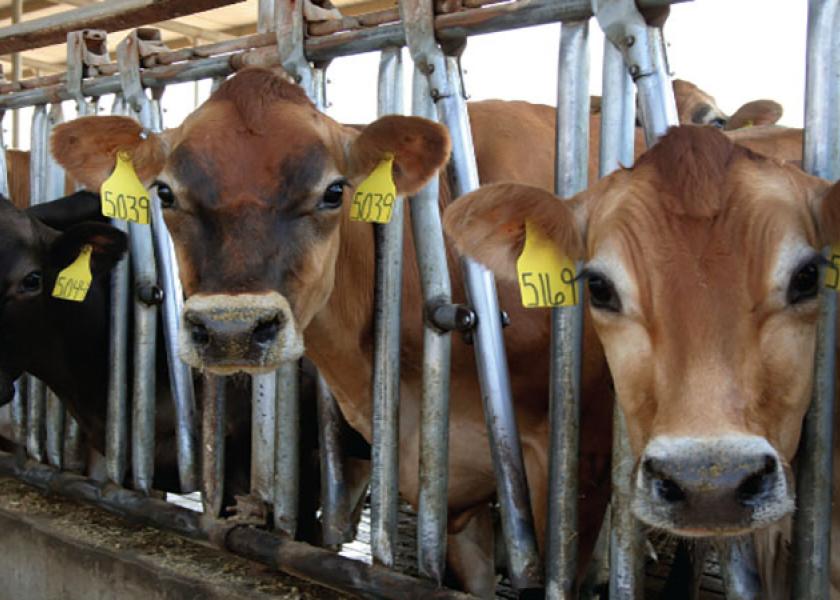Hunker Down for One More Year of Pressured Dairy Prices

2016 has been full of peaks and valleys for dairy producers across the country, and entering into the final days of the year, prices are starting to look promising.
“What’s been a tough 2016 as we got into mid-summer, I think we’re going to close 2016 looking much better if we keep prices where they are today,” said Scott Brown, University of Missouri agricultural economist.
“We’re seeing a shift in terms of tightness in the market around the world, and as a result, we’ve seen whole milk powder jump about 35 percent in the past three months,” said Tom Bailey, RaboBank Senior Dairy Analyst.
That strength is driven by improving cheese prices, helping carry milk, too. However, Brown says when you look at the massive supplies of both cheese and butter, there’s more downside risk than upside potential over the next few months. That’s a forecast with which Bailey agrees, but long-term, he says we are starting to see a shift.
“The U.S. has kind of marched to the beat of its own drum the past 24 months,” said Bailey. “The international market has done its own thing. but we’ve finally seen the international market contract in terms of supply. So, when we look at the seven biggest exporters across the country: that’s the U.S., Australia, EU, New Zealand, Argentina, Uruguay and Brazil, of those seven, six are now contracting in terms of milk volume. So that’s a big shift from where we were 6 to 12 months ago.”
He said the U.S. will be the only major dairy producing country to expand production over the next 12 months.
“Actually, we’re seeing commercial disappearance of well above average levels over the last few months as a result of this,” said Bailey.
Brown thinks while the international supply picture does look friendlier, it’s the dynamics among production that worries him long-term.
“If you look at the supply side of the industry, we’re very slow to respond to negative returns,” said Brown. “So, that means we have to wait for demand to catch up and go through a longer period of negative times for producers, yet, when we have good times in the dairy industry, we grow right away. We grow pretty rapidly and we grow out of those very good times.”
There’s also a shift in where milk is being produced in this country due to factors like regulatory issues and trouble finding water. That’s why some predict California could be dethroned as the number one milk producing state.
“If you take the last six months alone and you project it out over the next few years, it’s going to take about three years of California contracting at about 2 percent and Wisconsin growing at 4 to 5 percent, for Wisconsin to be the number one player,” said Bailey. “So, it’s still a ways out.”
Bailey said while it’s not impossible, he thinks both California’s contraction and Wisconsin’s growth will slow. No matter where the milk is produced, analysts think solid demand will surface over the next five years, making the price story a friendly one for dairy.
“We can’t really rationalize where the supply is going to come from that the world is going to need over the next 10 years,” said Bailey.
He thinks the U.S. market is one of the few that has the infrastructure, land and feed to meet growing international and domestic demand. That growing hunger for dairy is something the industry is watching, especially the change in consumers’ tastes.
“Purchase decisions, historically, were driven by price, convenience and taste,” said Barbara O’Brien, President of Dairy Management Inc (DMI). “That is no longer the case. Consumers have questions about where the products come from, the producers who bring them to market and the practices of those producers. So, our proactive efforts to sit with costumers at all levels of an organization have become critical to help them understand the good work the dairy industry is doing.”
“I think while many are concerned by this, it creates great opportunity for the industry to tell our story,” said David Ahlem, CEO of Hilmar Cheese Company. “Get to know your customers, get to know consumers and understand what they value and connect to that.”
He thinks the industry is just scratching the surface, as this market potential will grow, which is why he says he’s bullish for dairy in 2017.







